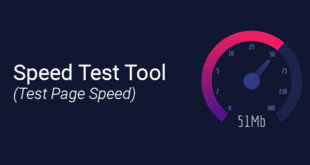According to studies, it is proved that if your website takes more than 2 seconds to load, there is a great decline in its search rankings. According to a report, around 75% of users will not want to revisit your website if it takes more than 4 seconds to load completely. All this makes website speed very important. Speed decides the ranking of your website. Increasing the speed of your website will give it more page views and users also spend more time on your webpage which gives a positive signal to the search engines. The first and most important factor affecting the website speed is hosting plan and server.
However, you need to understand that not only hosting plans or server affects your website speed. There are a lot more factors which can decline your website speed and hence performance. The website design also plays a major role in deciding its speed. Of course, web designers are trying their best to optimize the website for better speed and responsiveness. But are they covering everything to make your website a perfect candidate in the eye of search engines?
Performance is always a great issue for a website owner because the size of the website is getting bigger and bigger. This increase in size is due to images, animations, custom fonts, etc. All this makes slow loading speed quite common. But to rise above your competitors you need a faster website which outperforms them.
Here are some important tips which you can implement while designing your new website.
Use animations wisely
Animations give an attractive look to your website. These interactive elements improve the user experience. But the only downside of using them is their negative impact on speed.
Making your website attractive is important, but performance is surely a more important concern for the user. So always use animations and other special elements wisely. You can ask your developer this question. It is better to sacrifice these elements wherever possible. Focusing on performance from the starting phase of website designing will benefit you in the long run.
Optimize images
Images are among the biggest culprits when it comes to slow loading speed and a decrease in website performance. High-quality images take a lot of space on the server and whenever a user opens your website, the images start downloading on his device resulting in slow website loading.
Of course, you cannot sacrifice images because it helps your customer in better understanding your products and service. They are a crucial part of the website, and they also hold the user for longer on your website resulting in better conversion. Hence they are an important part of your website. You can smartly use image optimization to reduce the size of images without facing a downfall in their quality.
Here is how you can smartly use images
- Use SVG File format as it is smaller in comparison to JPG or PNG files.
- Compress images to reduce their size
- Apply effects on images to reduce size without sacrificing its quality and details.
Custom Fonts
Well, sometimes you need not to go into deep into website designing for better website performance. You can achieve great results just by reducing the number of custom fonts. Fonts come in huge varieties, but it is always better to use only one or two fonts for your website. A large number of custom fonts mean more files that should be accessed for loading your website. This results in slow loading of pages.
It is a good practice to decide which fonts you will be using on your website from start and stick to it. The lesser number of custom fonts you will use the better performance you will get.
Reusing the design elements
Reusing the design elements can be another way to optimize your website for speed and performance. You can make use of design elements that you have used on previous pages to make your website faster. Whenever you design a new page with a unique design, you are actually adding more number of codes to your website.
Think twice before adding new design elements on your website. You can consider using elements that you have created previously to make your website lightweight and faster. Not only this increase website loading speed and performance, but it also greatly increases the user experience by providing a consistent look and feel. This will help the developer in better optimizing the codes so that your website can perform better.
Conclusion
These are some crucial points to remember when designing your new website and will help you achieve great results in terms of speed and performance. These tips might look simple but they are actually very important and you should never ignore them. Carefully look into details and think smart and creative.
 Cheapest Linux VPS Home for Cheap Virtual Private Server
Cheapest Linux VPS Home for Cheap Virtual Private Server 




